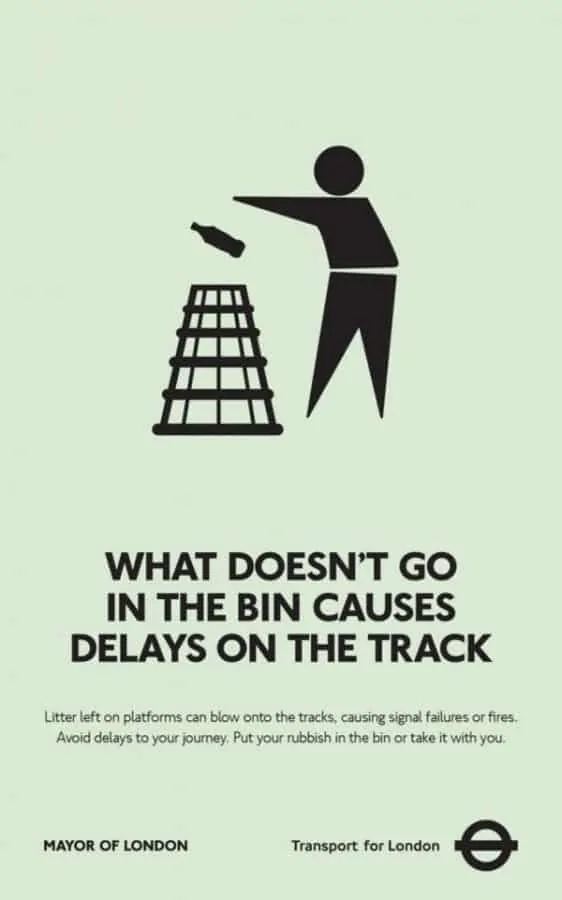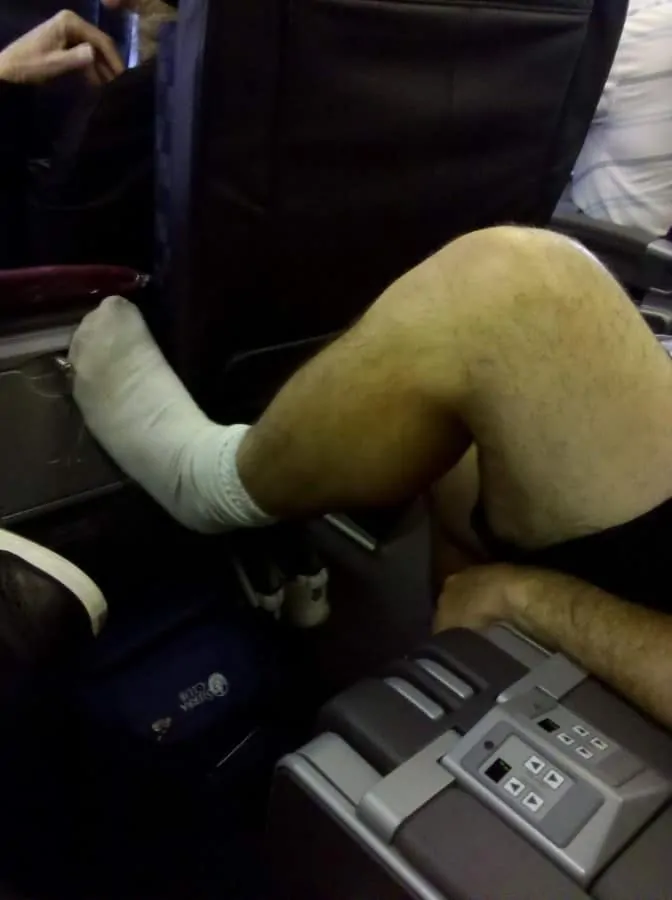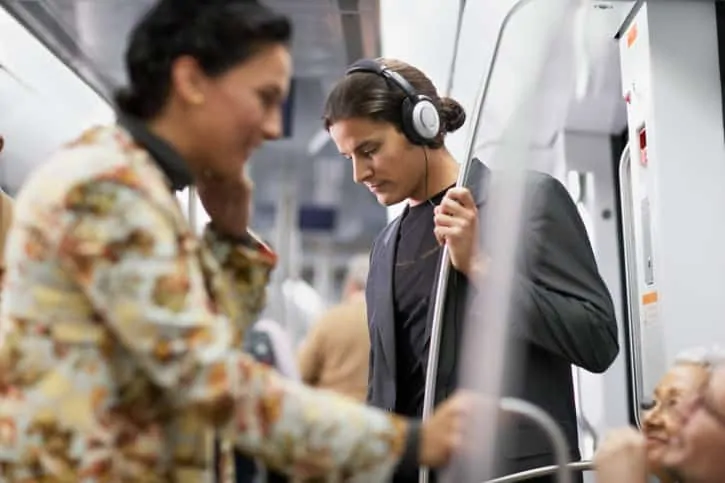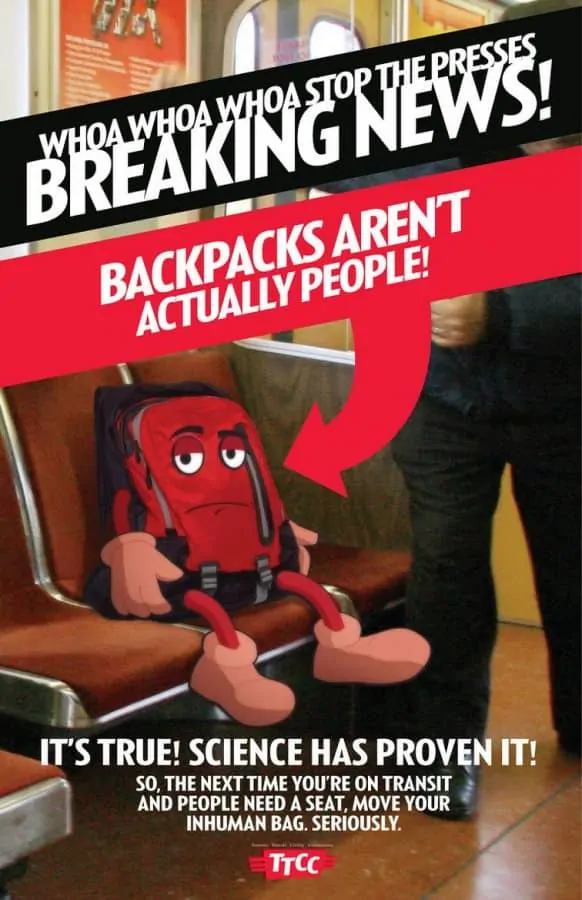Nostalgia is the handmaiden of etiquette. The litany goes: In the past all was better – the streets, cleaner; the men, manlier; the people, politer.
The Venice-Simplon Orient Express appeals to this perception. The annual Paris-to-Istanbul journey recreates the original Orient Express route and represents the epitome of luxury train travel. The carefully restored, well-appointed Deco railcars harken to a time when train travel embodied wealth and luxury and the fastest method of travel.
Even as we may all aspire to one day take this $10,000 per passenger journey, the Orient Express seems quaint . Today’s trains are sleeker, more efficient and designed with the laboring classes in mind. The declasse nature of train travel does not detract from its appeal. Traveling by train is often cheaper, safer and more convenient than traveling by plane. A high-speed train from London to Berlin can be accomplished comfortably and with beautiful views.
World travel today involves some combination of trains, planes and subways. Humanity has become adept at traveling through space in varying sizes of rectangular boxes. The hallmark of world travel is moving through time in confined spaces.
Conveying people at up to to 600 miles per hour by aeroplane or 200 miles per hour by train (the Shinkansen in Japan), in cramped spaces presents us with unique etiquette opportunities. Bodies are closer, children are louder, smells are heightened and noise increased. All facts that will conspire to upset and offend us, if we let it.
While we have little control over other people’s behavior, we can and do control our own behavior and our reactions to any situation. Looking after yourself while traveling will make any journey – whether around the world or to work – less stressful and more pleasurable.

Train Etiquette
1. Get You to the Station on Time
Whether printed on your ticket or in white on your hand-held device, train companies world wide go to great lengths to keep their schedules updated, please be on time.
2. Arrive at the Station With Time to Spare
Armed with your departure time, an arrival well-ahead of schedule lets you flaneur through the grandeur of Grand Central Station in New York City or King’s Cross St. Pancras in London.
Keep your head up and eyes ahead. Save the phone/tablet reading for the waiting area or the train ride. Stay to the right on escalators. Let your less organized brethren run up the stairs two at a time. If you will be traveling with several large bags (or a smart-car sized baby stroller), use the elevator. In older stations, elevators may be off the main pedestrian areas. Since you’ve arrived to the station early, you will have plenty of time to find them.
You may also be required to go through a simplified form of customs and baggage security. You are not worried, though. You have arrived early and have time to wait your turn in line, calmly and with a smile.
3. The Time to Watch That Cat Video
Pay attention while on the the train platform. Depending on the time of day and depending on how many trains arrive and depart a particular station and depending on how many delays have occurred prior to your departure, your train may arrive and depart in mere minutes.
“Oh, I missed my train because of this awesome cat video,” will not get you any sympathy.

4. Keep the Trains Beautiful (and the Tracks Safe)
By all means, enjoy that newspaper or magazine you have been itching to read. Have one or three bags of (gummy bears you purchased in Berlin. Just gather up all the trash and throw it away when you are done.
If you cannot wait and must disgorge all the bears from one bag while on the platform, throw the bag away or take it with you on the train. Trash on the tracks can cause fires and delays; and depending on where you are and how easily other passengers point to you as the culprit and how inclined the police are to detaining you, you might end up missing more than just your train.
Trash your trash.


5. Seats Are For People
Put your baggage in the luggage area found in every train car or put the bag under the seat if it fits. The seat across from or next to you is not for your stuff nor is the aisle. The same is true for your feet – don’t rest them on other chairs.
6. Use Your Inside Voice
Voices rise in a train with the high pitch whine. Lean towards the person you are conversing with. You may feel awkward at your proximity but the rest of the car will be spared, and gratefully so.

7. Your Personal Music and Food Tastes are Not for the Public
Smelly food is a top annoyance in the office. Not surprisingly, it is on trains, too. In those tiny rectangles clackety-clacking through space, your kimchi, stinky tofu or Vieux-Boulogne Cheese may call to you like a siren’s song. Resist!
Save those odors for more private or more expansive spaces, that also means you should keep your shoes on.
Music is no different. One person’s harmony is another person’s cacophony. Do not think for a moment those headphones make it all okay. While wearing them, if you have to raise your voice to answer a question, the volume is too high. So high in fact, people around you can hear your music (or cat videos or whatever).
An International Transportation Don’t
Whether on a train, a plane, bus or subway, forego getting cockeyed. Even less than your stinky foods and loud music, other passengers do not want your drool. Moderation is the key.
You know how much is too much. Stop just before that point or even a little bit before that.

Subway Etiquette
In a single day on planet Earth 189 metro systems convey approximately 120 million people over more than 11,000 km of track.
The rhythms of subway ridership worldwide is like orchestrated ballet. Out of seeming chaos arises organization. Hundreds of people descend flights of stairs from streets and are then funneled through turnstiles and out to escalators where they descend to train platforms.
Riding the subway can seem like a frontal (or rear!) assault: The passenger jabbing you with their umbrella; backpacks knocking you on your heels; hind quarters in your face; body odor; the woman occupying three seats to change her baby’s nappy.
Navigating subway systems in other countries can be tricky and not just because you do not speak the language. Every metro system has unspoken rules about the size of one’s personal space.
In cities like Tokyo, the sheer number of riders obliterates personal space during rush hour. At more than three billion riders annually, you will be shoved into rush-hour subway cars and find that your feet barely touch the ground. But no worries. You are being held aloft by the force of other people around you.
Staring is another one. New Yorkers do not. Nor do Parisians. Muscovites, though, find it perfectly acceptable to give strangers the once over.
Bodily extremes also happen. People urinate and defecate in subway cars and platforms worldwide. We can do little except look away, move away or exit the train to wait for the next one. Feculance will out, most assuredly.
Walking seems so much more pleasant, doesn’t it? But subways get us where we need to go more dryly, if it is raining, more warmly if it is cold, more coolly if it is hot and more quickly over greater distances. We need subways.
So sit back, if you can, relax and enjoy yourself. If you have reason to believe someone is in danger, say from a seizure, do something about it. Otherwise, read your phone, book or tablet. Chat quietly with your companion. Other wise, do not engage the oaf. The cars are too packed, the smells too strong and nerves too taut. You will add only to your own stress.

In our interconnected yet culturally specific-world, we will never get all the rules correct. Subway etiquette can offer simple protections against offending others. In the same way louts feel free to behave badly in the digital realm because they are anonymous, people can act like steroidal maniacs on a subway. Something loosens in the mind when one is a stranger in tight, stressful conditions.
Etiquette can keep others at bay. The ten pointers below will keep you nimble, agile and relatively stress-free.
For extra credit: Bring small professional-grade ear plugs. Some subway systems are louder than others. If loud noise induces your stress response, do yourself a favor and insert those little foam cones in your ears. Your tympanic membrane and other passengers will thank you.
1. Have Your Ticket at the Ready
Step aside the main entrance gates to pull out your ticket or pass. Do not wait to present your card (or money) until you arrive at the turnstile or agent . You must not hinder the great subway ballet at this point. Doing so marks you as a bumpkin. Ticket out, move through and keep going.
If you are purchasing a ticket from a machine and need time to understand how the machine works, step aside. Let other riders use the machine. In major stations, there are often ticketing agents in addition to machines. Use them, instead. They can also answer questions you have about your route.
2. Stand to the Right on the Escalator
Some cultures are conscious of time (think US and the UK); others of space (Germany) and still others both time and space (Japan). In countries where time reigns, stay to the right on the escalator. Dallying on the left will only get your grief. Whether by a firm “Excuse Me!” or a hand on the shoulder (very New York), you will be moved. Even when traveling in countries where time is more relaxed (France), stay on the right on the escalator or stairs. Invariably someone will want to ascend more speedily. No need to impede their efforts.
3. Wait in Line for Your Train
Cutting to the front of the line is probably one of the world’s top five no-nos. Wait at the end of the line. But make sure you are waiting in the correct line. North, south, east and west can be confusing underground. Don’t read Cyrillic or Japanese or Arabic or Korean? Your confusion just got worse.
4. Wait to Enter the Subway Car
In cities with more than one billion annual passenger rides, attempting to enter a subway car before exiting passengers will result in dirty looks. More aggrieved passengers will do a kind of passive-aggressive body-check on you. Then you risk being pushed back on your heels and away from the door. Or worse, of stumbling backwards and falling.
If you think jumping through exiting passengers will get you a seat, probably not. Unless you pick up the train at its originating station, you will be standing for the duration of the ride. The Paris city transport authority RATP (Régie Autonome des Transports Parisiens) describe this behavior as that of the ‘buffle’ or buffalo. The RATP created a series of funny public service announcements aimed at thwarting bad subway manners. The guy who pushes through exiting passangers? The buffalo. The RATP rightly points out that doing so won’t make the train leave any sooner.
5. Move with the Pushing and Shoving
Pushing and shoving happen in subways. Learn to discern the difference between intentionally pushing and the ordinary contact – however extreme it may seem to you – that is part of subway riding in the world’s more crowded subway systems. You will be crammed into a very tiny space. Just ask Japan’s train pushers.
6. Let the Doors Close
Resist the urge to hold the door open for that running woman desperate to make the particular train. Doing so delays the train and inconveniences not only people on your train, but other trains after yours. You might have to pay a visit to the station master if train personnel feel inclined to grab you by the collar and haul you away.
7. Sit in One Seat Only
The seat next to you is for another rider, not your stuff. Even if they use it for their packages. The seats may feel cramped, especially for larger British and American derrieres. But don’t let your thighs creep over the molded sides of the seat. Other riders aren’t at all interested in the feel of your thighs against their legs.
If you find the seat so uncomfortable, stand. We are not guaranteed personal comfort one hundred percent of the time. At some point riding crowded subways must become a zen-like effort at maintaining one’s equanimity. Breath in stress. Breathe out relaxation.
8. Be Considerate of Others
The elderly, small children and people with visible disabilities may need your seat. Offer it by standing and gesturing for them to sit in it. They may decline, but continue to gesture. If they insist they do not want it at least you have offered.
Where appropriate, offer to help carry large items up the stairs for anyone who appears to need assistance. You know, like the 98 year-old woman with luggage that weighs more than she does.

9. Don’t Litter With Trash or Your actions or Your Body Odor
In places where space is an organizing principle of a culture, leaving anything behind is rude. Leaving food, newspapers, drink containers or other litter is not acceptable. Ad campaigns around the world ask riders to eat at home or elsewhere, but not on the train. Also don’t shave, comb your hair, clip your nails or pick your teeth on the train.
And please shower and use deodorant. You don’t want to be that man who melts the windows of the car on a hot, August ride.
10. Talk Quietly and Keep the Volume Down
If other passengers can hear your music through your headphones, it is too loud. Turn down the volume. If the train noise bothers you, consider using those earplugs I mentioned earlier. Using your phone (if you can) annoys people when you speak loudly.
Better yet, answer your phone and tell the caller you’ll ring them back once you get off the train.
11. Sleeping is Permitted
Just don’t make the subway seats your bed.
12. Don’t Smoke on Trains
As a rule of thumb, you should not smoke on trains or subways, unless it is specifically permitted. For example, in Tokyo so one would ever think about smoking on a train, so it is not even expressly forbidden.
13. Giving Up Your Seat
When and when not to give up your seat can be a tricky question. Generally, you should offer your seat to people who are obviously impaired, frail and can’t seem to stand for a long while. Walking canes, crutches etc. are good indicators for that. However, sometimes people feel insulted when you offer your seat to them, because they believe they are not “that old yet”. Once, I witnessed a situation where somebody offered their seat to a seemingly pregnant woman, and he mentioned the word “pregnant” – it turned out, the women wasn’t pregnant and she felt very embarrassed. The best way to handle these situations, is to simply ask:”Would you like my seat?” That way you reduce the implications to a minimum, and most people would think of you as being very well mannered and attentive. If someone is in fact insulted by that, you can’t change that – better to offer your seat to someone who declines, than not to offer it to someone in need. For more etiquette, please visit our Etiquette Guide, here.

“Also don’t shave […]”
People actually do this? That’s insane.
Come to China…
And see all the above – quite obvious – Don’ts regularly perform by those people with a “5,000-year old history”…
Then go home and enjoy.
Excellent post Mr. Sennett. While I don’t have to travel via train or subway very often, I have in my experience been subjected to these faux-pas. I would also suggest this article could apply to bus transportation as well.
Too many people don’t follow simple consideration when in public, let alone such effortless rules as these. Thanks for posting about them.
Common courtesy is the way to go whether you’re on a train or anywhere else.
Especially if you’re dressed nicely, you’ll want to have the upmost respect shown to others, or you’ll just be a well dressed hypocrite.
Great job on the article.
Thanks Frank and Joe.
Excellent article. There will always be some people who have no regard for others, but a few simple rules of etiquette go a long way to making a pleasant journey.
A modern appliance that has developed hordes of ill mannered people is the cell phone. Cell phone use has exploded dramatically over the last ten years or so, but the etiquette of their use has never developed at anything like the same pace. Considerate people will consider others before chattering on their phones, but the vast majority seem to believe they are the centre of the universe and MUST take that call.
A quick note to say the ‘standing on the right’ normally only applies in countries where they also drive on that side. In Singapore, Australia, Indonesia etc where the driving is done on the left, so does one stand on the escalators. Standing on the right will result in an accusation that you’re a ‘tourist’.
I’m afraid that’s not entirely true; on the London Underground, you should stand on the right on escalators; overtaking is done on the left. I agree, it is strange, since driving in the UK is done on the left! But maybe this because, we English are a strange group of people!
Good article. But, many people seem to be oblivious of these common courtesies and think public transportation is their domain. Even on flights, though. Common scene is the armrest if you travel Economy class, like I do.
How correct your opening sentence. Nostalgia truly is the handmaiden of etiquette. The two would seem to be clasped together in a glass darkly. Obscured by shovelling white smoke over her shoulder and the mists of time. These open carriages, it never was. Walk along a corridor and find your compartment. Lower the window on a leather strap, take an upholstered seat. Read the Thunderer on the thunderer. Punched tickets for inspection. “The refreshment car is open sir, or would you prefer tea in you carriage?” See the station, it’s Victorian fretted iron-work painted Great Western chocolate and cream. The Station Master standing watch in hand and the porter loading his trolley. When King George’s golden bell reflected sunlight and gleaming livery flashed by. The King, now a polished relic of the past and etiquette an ageing handmaiden. “You’ll have to shout. I couldn’t hear you, the train is full of people on mobile phones. What was that you said……?”
I guess that’s why they call them cattle cars….
So I live in NYC and take the subways daily. I’m just about at the end of my rope when it comes to enduring the selfishness, impoliteness, and sheer offensiveness of the majority who ride the rails. We’re all living in an iPod world where everyone is in their own little bubble. They do what they want, when they want, and couldn’t care less about the concept of sharing space. I don’t see this getting any better but it’s good to know that there are those people (like on this web site) who still do adhere to common courtesy and long for a time when others follow suit.
Thank you!
Tony, share a few of your experiences please.
In Tokyo, you stand on the left-side of the escalator if you’re riding it up and let the people walking/running it go up on the right. :)
Thanks for sharing.
Another relevant, well researched and sadly timely article! BRAVO! Well done!
Here in Washington D.C. – a city imbued with lofty democratic ideals, but surrounded on four sides by reality, standing on the right is a cherished tradition. As the Nation’s Capital swells with those who don’t know or don’t care, anger and frustration mount. Your article motivates me to write to the METRO management and suggest a few signs suggesting that folk stand on the right and pass on the left. Fellow Gentlemen readers: Do your cities have such signs? Are they generally heeded?
Great post as always, Jay. But kindly note that “crotch” and “crutch” are different words; you made a very unfortunate typo.
A very good article, with very useful advice, which we would all do well to heed! I was amused by your point about the subway being cooler than walking when it is hot, however; this is not the case, in my experience, at least, on the London Underground!
i was in London three weeks ago and found that there are no bins in the underground, this due to potential IED’s. I also saw a cleanup person push some trash on to the track with her foot.